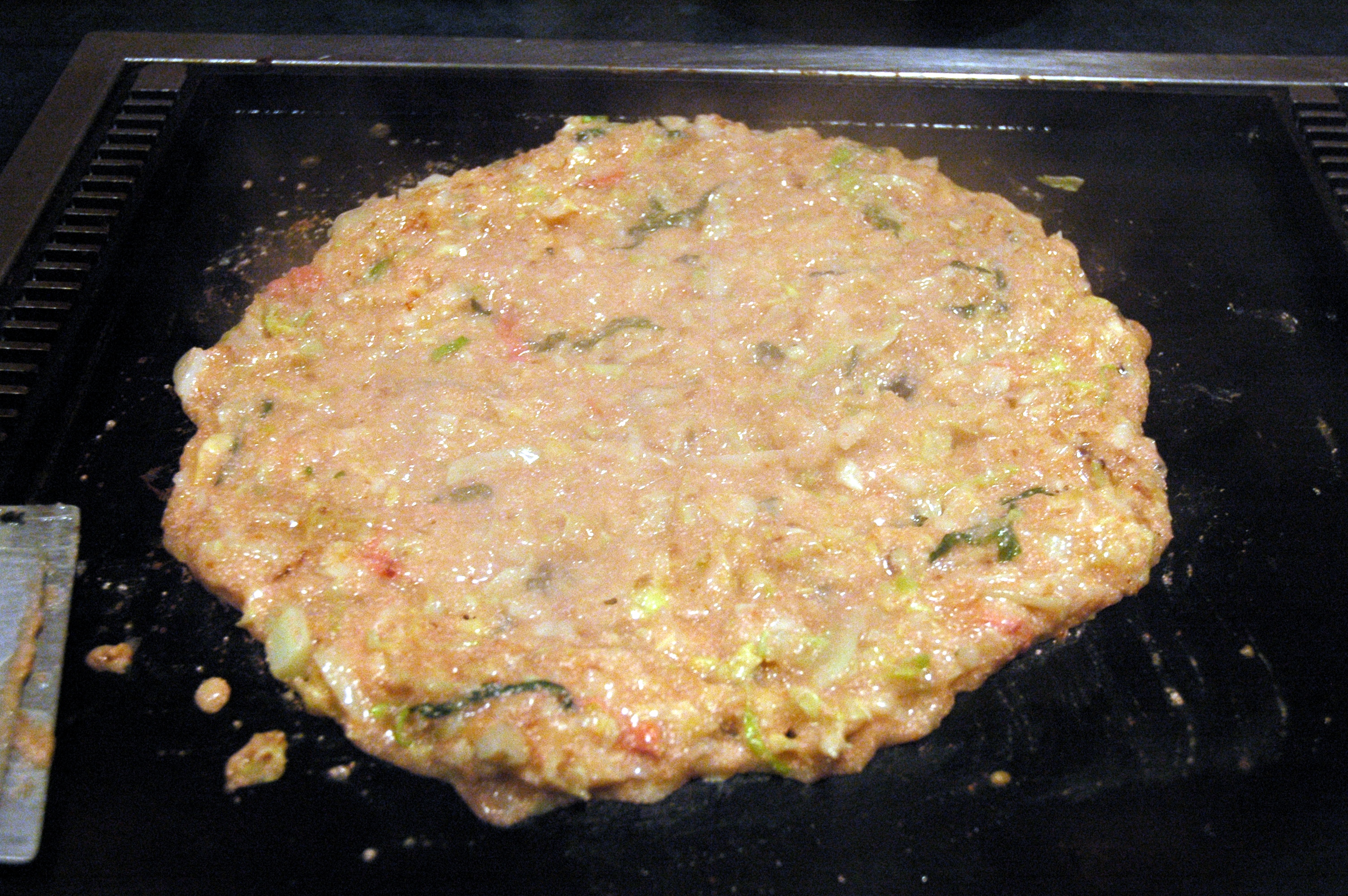Monjayaki Before on:
[Wikipedia]
[Google]
[Amazon]

 is a type of Japanese pan-fried
is a type of Japanese pan-fried
The chow-down tour of Kanto's local dishes
, ''
batter
Batter or batters may refer to:
Common meanings
* Batter (cooking), thin dough that can be easily poured into a pan
* Batter (baseball), person whose turn it is to face the pitcher
* Batter (cricket), a player who is currently batting
* Batter ( ...
, okonomiyaki
is a Japanese savory pancake dish consisting of wheat flour batter and other ingredients (mixed, or as toppings) cooked on a '' teppan'' (flat griddle). Common additions include cabbage, meat, and seafood, and toppings include ''okonomiyaki' ...
, but using different liquid ingredients.
Ingredients
The ingredients in monjayaki are finely chopped and mixed into the batter before frying. Monjayaki batter has ingredients similar to okonomiyaki. However, additionaldashi
is a family of stocks used in Japanese cuisine. ''Dashi'' forms the base for miso soup, clear broth soup, noodle broth soup, and many simmering liquids to accentuate the savory flavor known as umami. ''Dashi'' is also mixed into the flour ...
or water is added to the monjayaki batter mixture, making it runnier than okonomiyaki. The consistency of cooked monjayaki is comparable to melted cheese.
Diners eat directly from the grill using a small spatula. Monjayaki diners also participate in the cooking by spreading raw monja on the grill so that crispy bits form and caramelize
Caramelization is a process of browning of sugar used extensively in cooking for the resulting sweet nutty flavor and brown color. The brown colors are produced by three groups of polymers: caramelans (C24H36O18), caramelens (C36H50O25), and ...
. Many monjayaki restaurants can be found in the Tsukishima
is a place located in Chūō, Tokyo, Japan, in the Sumida River estuary. It is a reclaimed land next to Tsukuda District. The land reclamation completed in 1892, using earth from the dredging work performed to create a shipping channel in To ...
district of Tokyo
Tokyo (; ja, 東京, , ), officially the Tokyo Metropolis ( ja, 東京都, label=none, ), is the capital and List of cities in Japan, largest city of Japan. Formerly known as Edo, its metropolitan area () is the most populous in the world, ...
where the dish is said to have originated. Most of these restaurants also serve regular okonomiyaki.Trautlein, Steve,The chow-down tour of Kanto's local dishes
, ''
The Japan Times
''The Japan Times'' is Japan's largest and oldest English-language daily newspaper. It is published by , a subsidiary of News2u Holdings, Inc.. It is headquartered in the in Kioicho, Chiyoda, Tokyo.
History
''The Japan Times'' was launched b ...
'', 24 August 2012, p. 15.
See also
*Japanese cuisine
Japanese cuisine encompasses the regional and traditional foods of Japan, which have developed through centuries of political, economic, and social changes. The traditional cuisine of Japan ( Japanese: ) is based on rice with miso soup and ot ...
* Teppanyaki
, often confused with , is a post-World War II style of Japanese cuisine that uses an iron griddle to cook food. The word ''teppanyaki'' is derived from ''teppan'' ( 鉄板), the metal plate on which it is cooked, and ''yaki'' ( 焼き), which ...
* Okonomiyaki
is a Japanese savory pancake dish consisting of wheat flour batter and other ingredients (mixed, or as toppings) cooked on a '' teppan'' (flat griddle). Common additions include cabbage, meat, and seafood, and toppings include ''okonomiyaki' ...
References
Japanese cuisine {{Japan-cuisine-stub